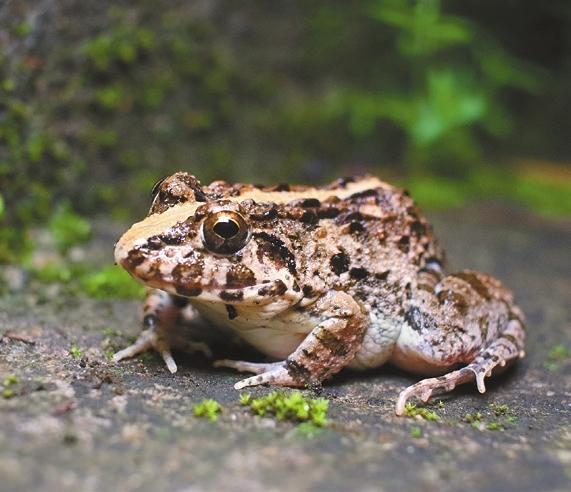
THE paddy frog (Fejervarya multistriata) is native to East and Southeast Asia, including China, Vietnam, and Laos. The paddy frog is a small amphibian with an average length of around 3-4 cm. Covered entirely in small, warty bumps, it has a long, pointed snout. A light-colored stripe that runs along its back makes it easily recognizable. The coloration of this species ranges from light brown to dark green, depending on its habitat. This amazing frog is typically found in areas with high humidity, such as rice paddies, marshes, and other wetland habitats. A burrowing species, they dig holes in the ground to hide and can often be found in muddy soil or under rocks. This carnivorous amphibian feeds primarily on insects and other invertebrates, including beetles, ants and flies, which they catch with their long, sticky tongue. Like other amphibians, the paddy frog has several natural predators including birds, snakes, and small mammals such as shrews and rodents. They have developed several defense mechanisms to protect themselves. For instance, they can inflate their bodies to make themselves appear larger and more intimidating, and they secrete a toxic substance from their skin that can be harmful to predators. Their breeding season usually begins in early spring when the temperature starts to warm up. During that time, males call out to females with a characteristic sound. After mating, the female lays her eggs in a gelatinous mass, which she then attaches to plants or other objects in the water. Frogs play an essential role in its ecosystem as predators of insects and other invertebrates. Its burrowing behavior can also help to aerate the soil, benefiting plants and other animals in the area. The degradation of wetland habitats due to urbanization and agriculture is a significant concern for their survival, while pollution from pesticides and other chemicals can contaminate the water and reducetheir populations. | 
